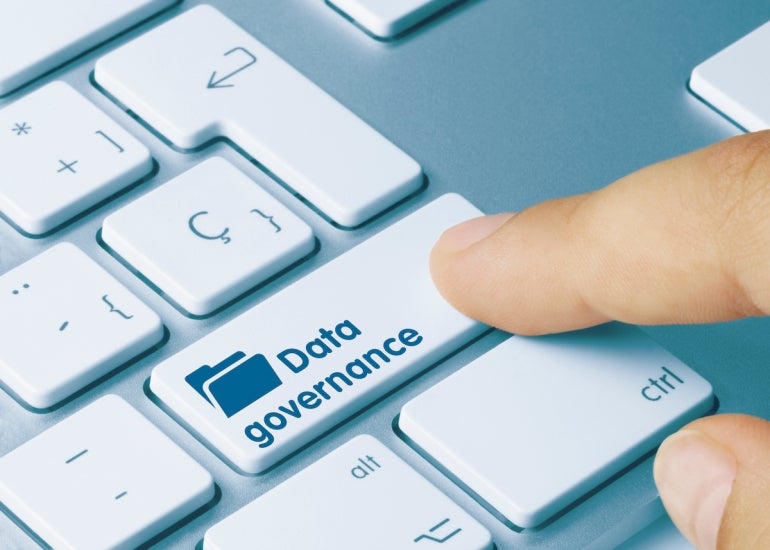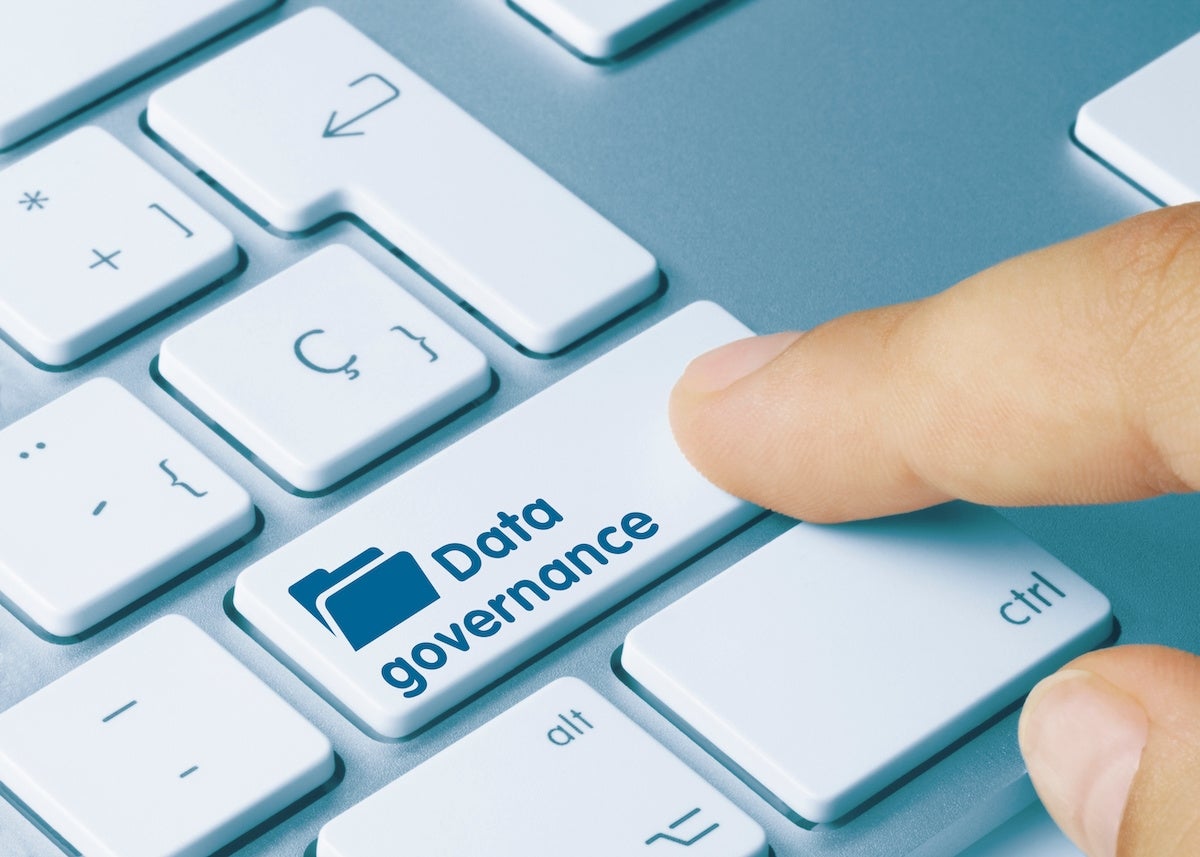
Data governance programs are getting more and more attention in the corporate world, especially in industries that rely heavily on big data. Many businesses rely on accurate and well-managed assets that include information technology, business, and confidential or personal data.
The number of data sets that employees, partners, vendors, and customers need to regularly access and use continues to grow exponentially. As more data enters the picture, companies are recognizing that having a plan to help them manage this data becomes necessary. As a result, data governance programs are being created and optimized for future business needs.
Jump to:
- What is a data governance program?
- Why are data governance programs necessary?
- Who is involved in the data governance process?
- How do you set up a data governance program?
- Adapting data governance programs for future business needs
What is a data governance program?
A data governance program includes best practices, policies, and procedures that protect the confidentiality and integrity of a company’s data. This type of program establishes standards and procedures for capturing, storing, managing, analyzing and sharing business data throughout its lifecycle from creation through deletion. By defining these rules and guidelines through a data governance program, businesses reduce the risk of violating privacy laws while simultaneously increasing customer satisfaction.
Why are data governance programs necessary?
Data governance programs are necessary to ensure that all organizational data is controlled and optimized for security, accessibility, and proper usage. This type of program provides a framework that directs the roles and responsibilities of employees that regularly work with data.
SEE: Hiring Kit: Database engineer (TechRepublic Premium)
Data governance programs address a business’s need to control and manage data, which serves a number of purposes beyond employee best practices: protection of a company’s intellectual property, compliance with legal requirements and the establishment of common security standards. Without data governance programs in place, data inconsistencies can lead to lost time and money as resources are spent trying to reconcile inaccurate data.
Data governance eliminates enterprise data silos by focusing on how data flows through an organization. Implementing policies across different departments can help improve the effectiveness of team collaboration while also increasing employee transparency and trust.
To set up a successful data governance program, companies need to identify their specific needs so they can create processes according to those needs. The foundation of any good data governance program starts with mapping out what information is being collected, where it is stored and how it’s shared.
Who is involved in the data governance process?
The roles and responsibilities involved in a data governance program differ between different organizations, especially depending on the types of data being governed. These are some of the most common roles and responsibilities for data governance programs.
Chief data officer
The CDO is a top-level authority over the data governance process who helps set policies, strategies and plans for the whole organization.
Data governance manager and team
Data governance teams are responsible for establishing processes and tools that enable access, usage, storage, retention, transfer and deletion of data across organizational boundaries. The data governance manager, who sometimes doubles as CDO, leads daily operations for an organization’s data governance process. Operational responsibilities include compliance with relevant privacy regulations.
Data governance committee
A data governance committee is mainly made up of business executives and other data owners. This committee monitors the implementation process. In addition, they aid in establishing procedures and contingency plans for security breaches, business continuity, and disaster recovery.
Data steward
Data stewards oversee the quality of individual data elements, ensuring their validity and accuracy across various company projects. A data steward’s goal is to ensure data needs are identified at the beginning of a project to maintain quality throughout the development, testing, deployment and evaluation phases.
How do you set up a data governance program?
There is no one-size-fits-all solution for setting up a data governance program. To avoid common pitfalls, consider these best practices when setting up your data governance program.
Determine data governance roles and responsibilities
Building data governance into an organization’s core often starts with ensuring that key managers are aware of their responsibilities. Leaders that regularly engage with company data should understand how and when decisions that affect data should be made. They must also understand and adhere to the company’s policies for data security and access.
Identifying data governance leaders and creating procedures and documentation related to data access helps companies to optimize their data governance programs at a more granular level and improves data compliance at all levels of the organization.
Identify and prioritize existing data
Before creating new data governance programs, identify and prioritize existing data. Start by asking these questions:
- What does this data do for the company?
- Who is involved in this project?
- How is this data currently organized and managed?
Many organizations get started with big data management by assigning responsibility for specific functions to individual stakeholders. Once all relevant information has been compiled, it becomes clear who is responsible for which subsets of data.
This approach has some advantages because it gives employees ownership over their part of the data. It also makes sense when only one person or department oversees certain data types or elements within an organization’s overall enterprise data architecture model.
Prepare and transform metadata
The implementation of data governance programs usually includes preparing, transforming and managing metadata.
Data preparation is the process of cleansing and validating data to meet standards for data quality, uniqueness and completeness. Transformations involve changes in the structure or content of data stored within an organization to make it available for certain functions and business processes.
Metadata management includes creating templates that help define specific use cases, purposes and formats needed to access the data; data catalogs are the most important metadata repository for data governance programs. They store information about enterprise data — including its origin, data lineage and ownership status — allowing organizations to determine if they are adhering to their policies regarding who can access what data.
Establish thorough data usage policies
Data policies are important components of data governance programs that help businesses to achieve data and business intelligence-driven insights. But before a data governance committee can establish any data governance policies, there needs to be consensus around an enterprise’s data governance goals. When clear goals are set, it becomes easier to create data governance policies that align with those goals.
Policies should cover data protection laws, such as GDPR or HIPAA, which mandate that any data collected is stored securely and not shared without explicit, documented consent.
Assess data risks
Assessing risk means understanding how an internal or external event might affect an organization’s ability to use its digital assets effectively. A variety of user errors and malicious acts could impact risk.
When creating a data governance program, be sure to assess all kinds of data risks. Data professionals need to know what personal information is being collected and stored, where it’s being stored, and data security and encryption factors. They should also be familiar with what could go wrong with their data in unforeseen circumstances like data breaches and natural disasters. Noting these factors will help companies to create policies that prevent or mitigate risk scenarios.
Invest in people and processes
The best way to ensure data governance program success is by investing in people and processes. Training data stewards and data governance teams means giving them the support they need to manage existing data while creating effective changes in data management.
Data stewards and professionals are the key players in any successful data governance program. The technical controls companies put in place offer limited value if there isn’t an expert operator who can audit and enforce policies, procedures, and established governance rules.
Beyond well-trained data experts, it’s important to spend time developing effective processes. Process automation will help organizations save time and effort, but the amount of human intervention needed will vary depending on how much an organization can or is willing to automate its processes.
Adapting data governance programs for future business needs
Just like any other project with ambitious goals, developing an effective data governance framework is not something that happens overnight. It takes time to assemble the team, identify critical gaps, define objectives, and implement solutions.
Companies must have strong leadership from the top down, including senior executives and data professionals who are fully aware of their roles and responsibilities. And for a successful data governance program to remain successful, businesses need to measure progress along the way to know what works and what doesn’t.
Data governance is a continuous process and must be updated to meet evolving enterprise standards and needs. As industries change how they use and manage data, companies will need to adapt their data governance programs in order to keep up with their data-driven competitors.

